11 species of lethal poisonous plants that we should avoid
- 10+ images of mutant vegetables like radiation
- 15 destinations make you want to leave everything to explore the world
- Admire the 10 exotic houses perfectly hidden between nature
When you step into exploring the wild nature, you will always have a chance to encounter some kind of poisonous plant . While adults will probably walk over it, children are different, they will feel curious and approach.
Therefore, we want to remind you that there are many dangerous plants grown for decoration and can be found not only in the forest but also in your home and garden. Please be wary of them!
We invite you to take a look at 11 lethal poisonous plants that we should avoid!
11. Buttercups

 © Pixabay © Chris ~ commonswiki / wikipedia © Christian Fischer / wikipedia
© Pixabay © Chris ~ commonswiki / wikipedia © Christian Fischer / wikipedia
Scientific name : Ranunculus
Found in : the temperate zone of the Northern Hemisphere. Usually grows in wet or swampy areas.
There are several species of buttercup and yellow flowers and many of them are very poisonous.
Dangerous by : The yellow flower buttercup contains caustic wax that can leave sores on the skin. When exposed to mucous membranes, it causes coughing and laryngospasm. If the wax gets into the eye, it may cause temporary blindness.
10. Need water - Cowbane or Water Hemlock
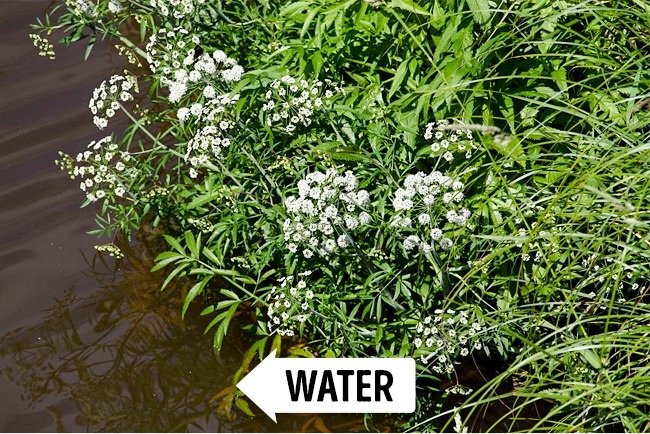
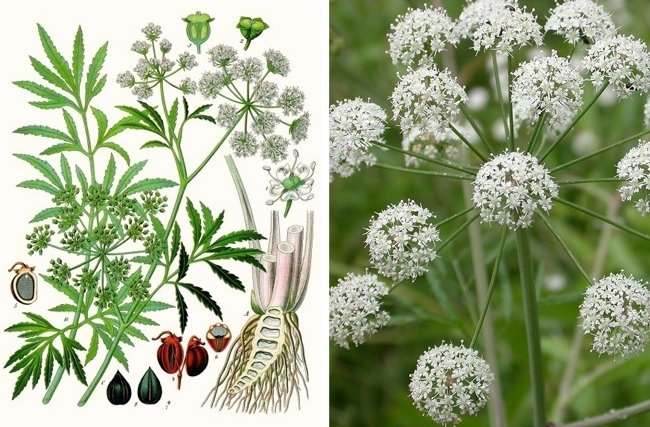 © Anneli Salo / wikipedia © Franz Eugen Köhler / wikimedia © Olivier Pichard / wikimedia
© Anneli Salo / wikipedia © Franz Eugen Köhler / wikimedia © Olivier Pichard / wikimedia
Scientific name: Cicuta virosa
Found in : Europe, Asia and North America. Cowbane or Water Hemlock grows in wet places like marshes and rivers.
Cicuta smells like carrots, don't be fooled by them because it's one of the most exclusive plants in the world. It is not easily distinguishable from other related species. For safety, do not touch similar growing plants in wet places.
Dangerous by : Symptoms of poisoning include nausea, seizures and heart failure. It can even be fatal. Just 100-200 grams of stumps need water to kill a cow.
9. Elder Tree - Elder
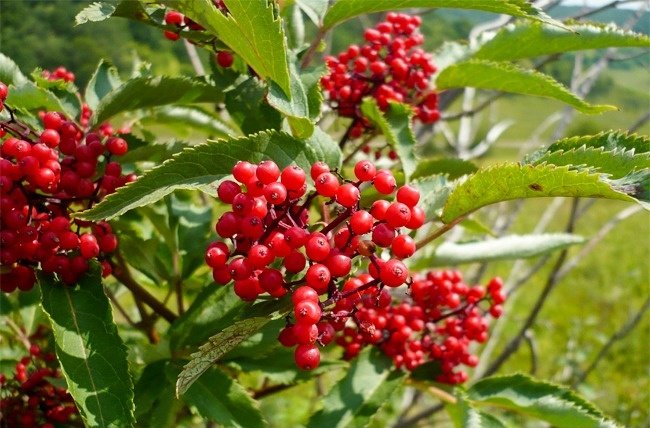
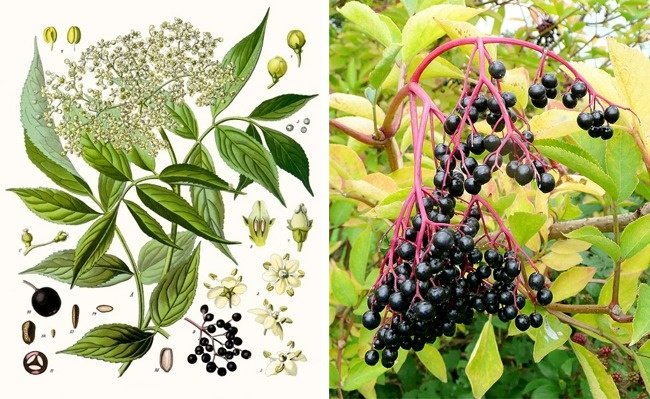 © Jonathan Billinger / wikipedia © Lobachev Vladimir / wikipedia © Franz Eugen Köhler / wikipedia
© Jonathan Billinger / wikipedia © Lobachev Vladimir / wikipedia © Franz Eugen Köhler / wikipedia
Scientific name : Sambucus
Found in : The temperate region of the hemisphere of North and Australia. The most common types of this genus are red elderberry and black elderberry. All parts of this plant contain toxins that are harmful to the human body.
Simply touch a elderberry, you should wash your hands immediately. However, ripe black elderberry is completely safe, can also be used to make drinks and pies.
Dangerous : Elder plants cause headaches, weakness, abdominal pain and occasionally seizures. That can lead to heart failure or respiratory failure.
8. Oleander - Oleander
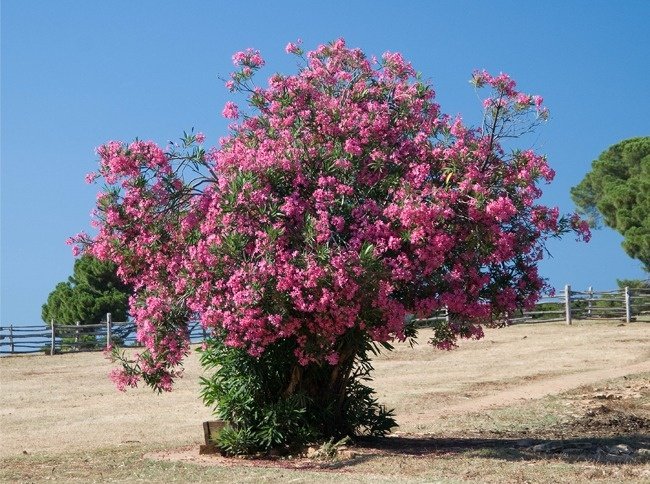
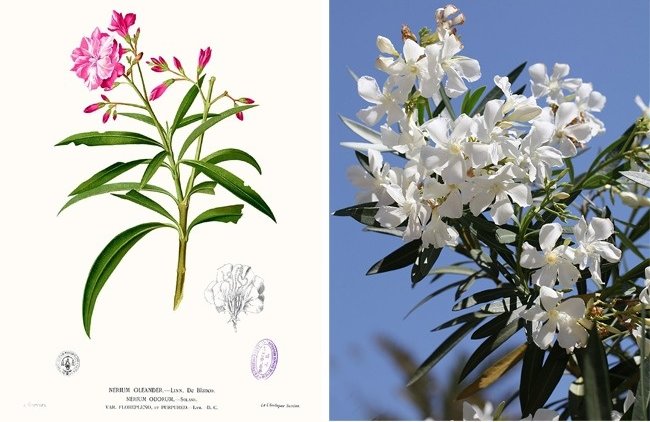 © Ranko / wikipedia © Francisco Manuel Blanco / wikipedia © Keith Williamson / wikipedia
© Ranko / wikipedia © Francisco Manuel Blanco / wikipedia © Keith Williamson / wikipedia
Scientific name : Nerium
Found in : tropical and subtropical regions. Oleander is used in landscape design and is grown around the world for decorative purposes.
Peach bamboo is really a dangerous plant, they attract us because of the beautiful scent and the pink or white flowers.
Dangerous : Peachwood containing glycosides can alter heart rate, cause nausea, headaches, weakness and even death. According to ancient legend, Napoleon soldiers used the branches of oleander to create fire and roast meat on it. The next morning, some of them were unable to wake up anymore.
7. Top Umbrella - Aconite or Wolf's Bane
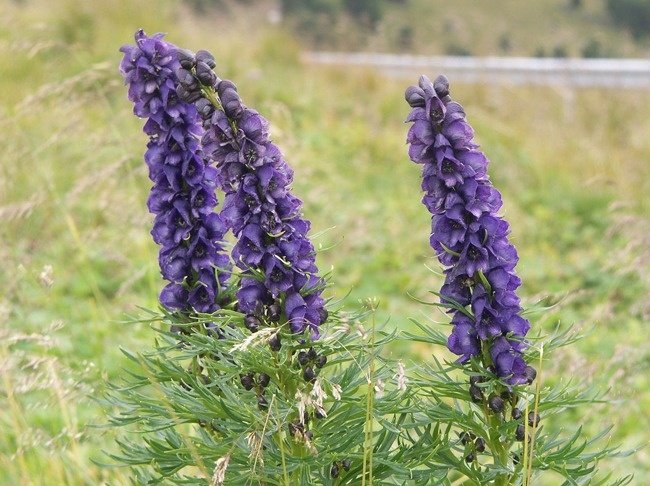
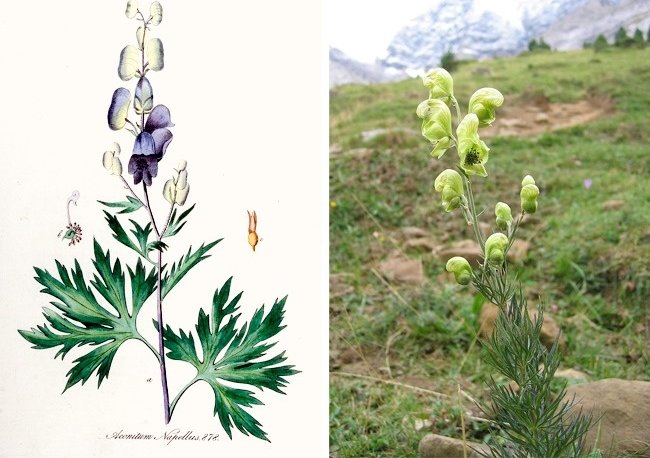 © Rüdiger Kratz / wikipedia © BioLib.de/wikipedia © User: Tigerente / wikipedia
© Rüdiger Kratz / wikipedia © BioLib.de/wikipedia © User: Tigerente / wikipedia
Scientific name : Aconitum
Found in : Europe, Asia and North America. Due to the beautiful purple, blue and yellow flowers of the first tree, they are grown for decoration. It was a tall tree and looked eye-catching.
In the ancient world, the first tree was used in poisoned arrows. Even bees can be poisoned if they collect pollen in the early Oranges.
Dangerous by : The FIRST OVERSEAS tree, causing arrhythmia, paralysis, vision loss and death.
6. Poisonous coffee - Jimsonweed
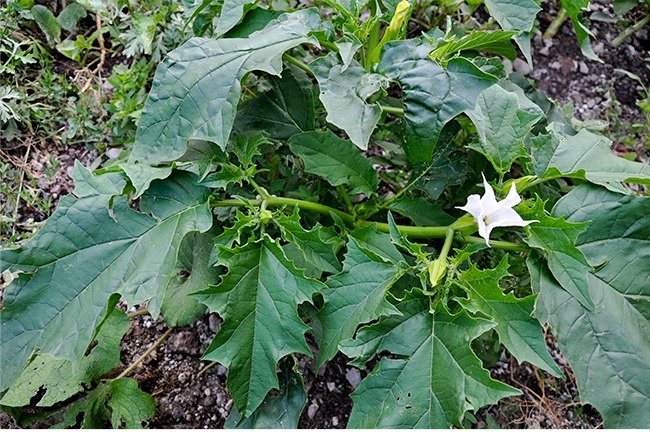
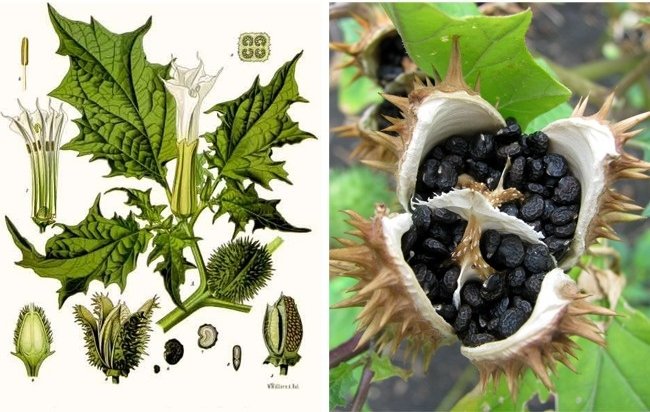 © Nova / wikipedia © Franz Eugen Köhler / wikipedia © Lazaregagnidze / wikipedia
© Nova / wikipedia © Franz Eugen Köhler / wikipedia © Lazaregagnidze / wikipedia
Scientific name : Datura stramonium
Found in : North and Central America, Europe and Southern Russia.
Poison trees are similar to potatoes or tomatoes, which is not surprising because they are close relatives. This is an unrecognizable plant with fruits with prickly venom and black seeds inside. The white flowers of the poisonous plants emit a scent that makes the innocent.
Dangerous by: It contains alkaloids that cause anxiety, disorientation and delirium. In severe cases can lead to coma and death. Magicians of many nations used this plant in their rituals.
5. Parsley - Hogweed
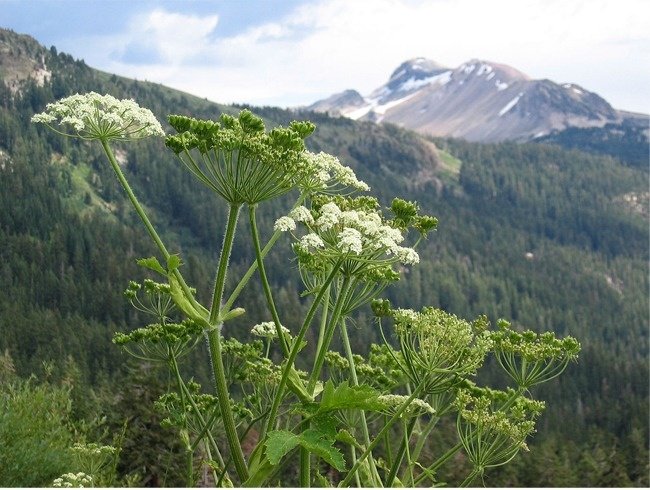
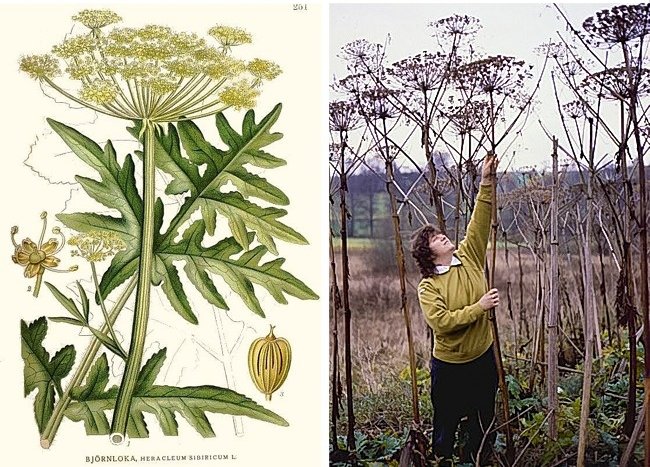 © Carl Axel Magnus Lindman / wikipedia © Walter J. Pilsak / wikipedia © Dcrjsr / wikipedia
© Carl Axel Magnus Lindman / wikipedia © Walter J. Pilsak / wikipedia © Dcrjsr / wikipedia
Scientific name : Heracleum
Found in : In the Eurasian temperate region. Some species grow in the US. This is a giant crop and looks quite impressive, but be careful not to take a photo beside it.
Dangerous by : Some species containing furanocoumarins cause blistering in sunlight. If this wax sticks to your hands, wash and avoid sunlight for about 2 days.
4. Spurge - Spurge
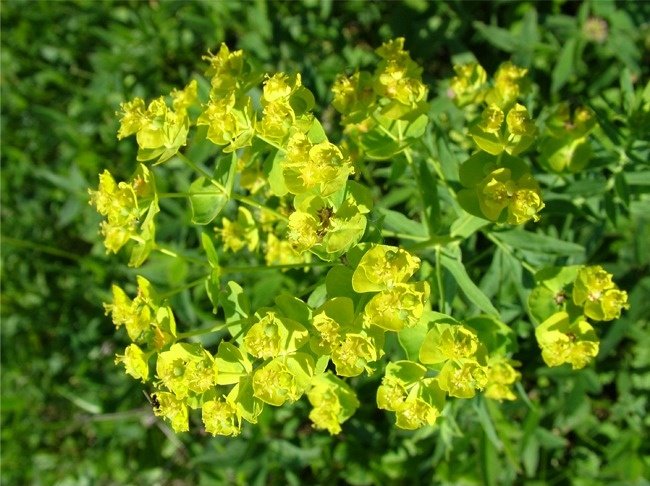
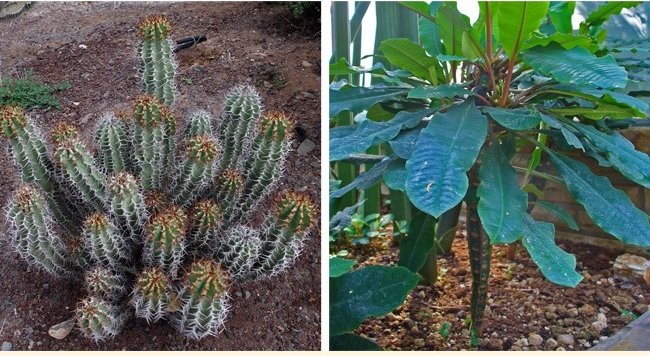 © Niklitov / wikipedia © Dinkum / wikipedia © H. Zell / wikipedia
© Niklitov / wikipedia © Dinkum / wikipedia © H. Zell / wikipedia
Scientific name: Euphorbia
Found in : all over the world. It is often found even in our homes.
There are a large number of species belonging to the Great genera. However, they are often very different: some are like cacti, others are like flowers. Ask your child not to touch strange plants, even if they are grown in pots.
Dangerous by : Great foliar wax can cause blistering, accompanied by discomfort, swelling and fever.
3. Rhubarb - Rhubarb
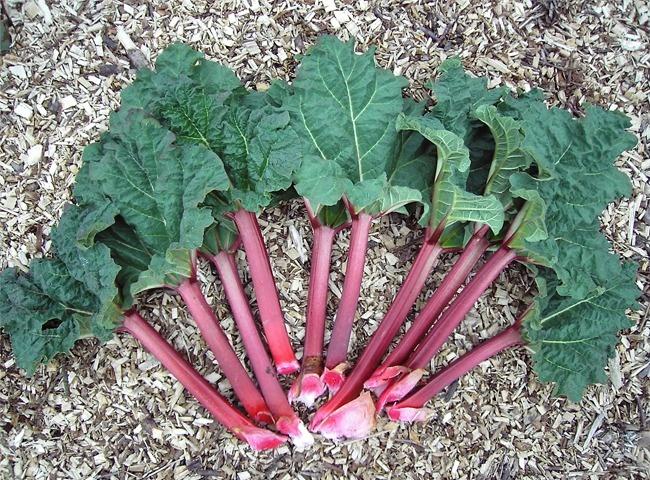
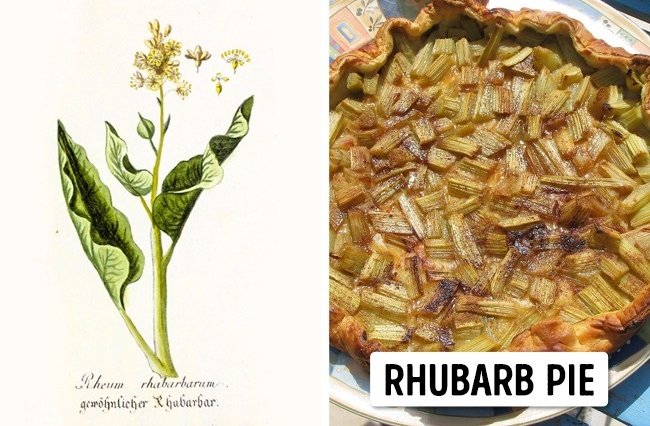 © DocteurCosmos / wikipedia © Dieter Weber / wikipedia © Florilegius / amanaimages
© DocteurCosmos / wikipedia © Dieter Weber / wikipedia © Florilegius / amanaimages
Scientific name: Rheum rhabarbarum
Found in : Europe, Russia and America.
In many countries, rhubarb is also used to make pies, salads and sauces. Even, some people like to chew on its living trunk.
Dangerous : Not everyone knows that the rhubarb leaves and roots are not edible because they contain large amounts of oxalic acid that can cause throat and eye irritation, kidney stones, nausea, and even pepper. run.
2. Datura - Belladonna
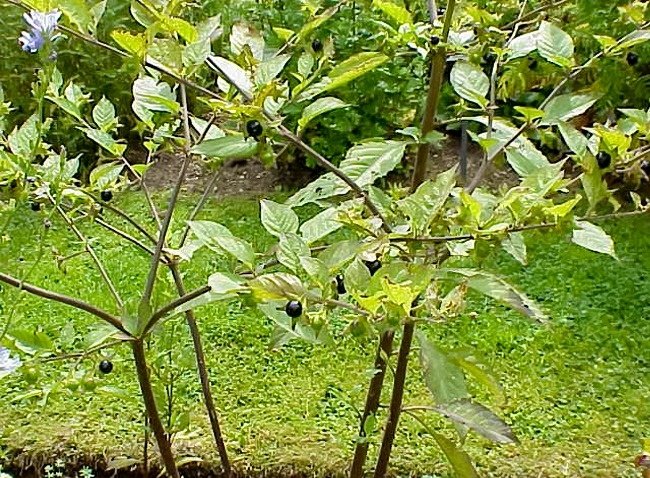
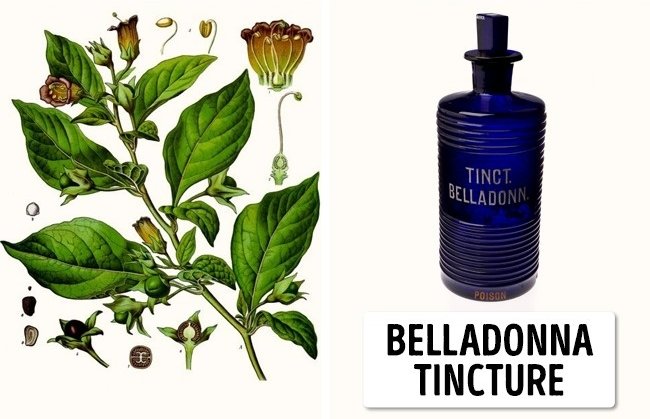 © Otto Wilhelm Thomé Flora von Deutschland / wikipedia © Kurt Stüber / wikipedia © Science Museum / wikipedia
© Otto Wilhelm Thomé Flora von Deutschland / wikipedia © Kurt Stüber / wikipedia © Science Museum / wikipedia
Scientific name : Atropa belladonna
Found in : North Africa, Europe, Southern Russia, Asia Minor and parts of North America.
Datura looks like a bush with black berries and pink flowers. It contains atropine, an organic substance that contains nitrogen causing dilated pupils. In the Middle Ages, drops of coffee were used to make the eyes look more attractive. Today, coffee drops are also used during eye surgery.
Dangerous by : A mild poisoning leads to palpitations, anxiety, dryness and burning in the mouth. Serious poisoning can result in complete loss of awareness, sometimes causing cramps and death.
1. Castor Bean - Castor Bean
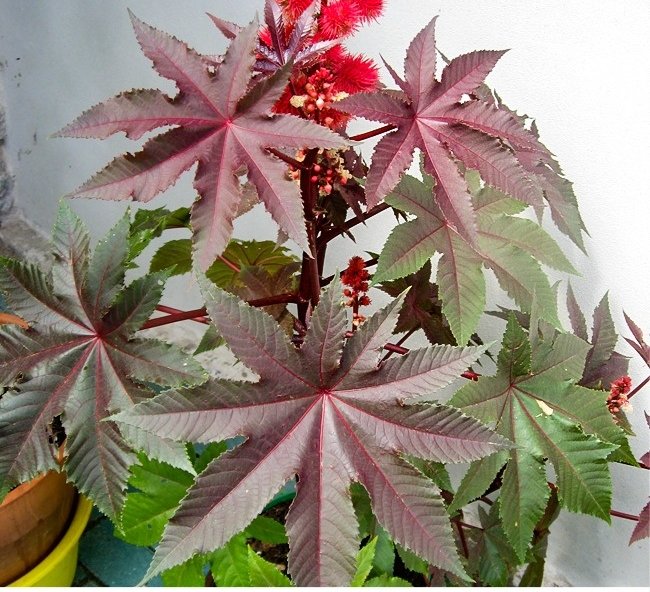
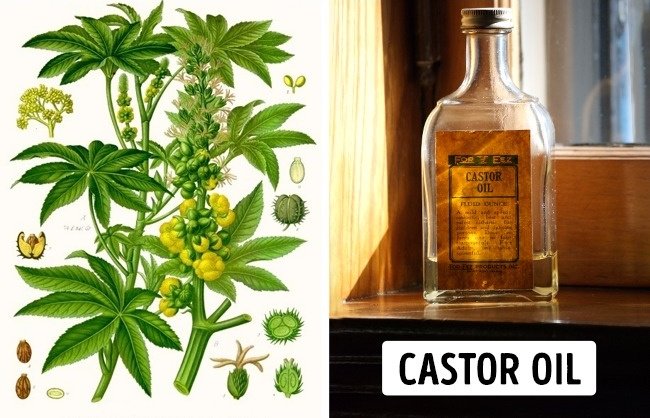 © Dezidor / wikipedia © Franz Eugen Köhler / wikipedia © Pete Markham / wikipedia
© Dezidor / wikipedia © Franz Eugen Köhler / wikipedia © Pete Markham / wikipedia
Scientific name : Ricinus communis
Found in : tropical, subtropical and subtropical regions. With a strange appearance, castor seeds are often grown as ornamental plants. Not surprisingly, castor grain is used to make castor oil. Don't worry: heat treatment will kill all the toxins in it.
Dangerous by : Perhaps this is the most dangerous tree. It contains extremely toxic compounds: ricin and ricinine . Particles of castor are particularly dangerous: just 4-7 grains will lead to death. In addition, smaller doses can still cause irreparable health damage because ricin destroys body tissues.
Supplement: Venus flytrap fly trap
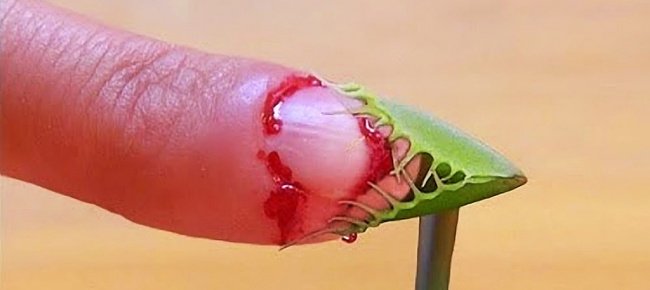 © Kluna Tik / Youtube.com
© Kluna Tik / Youtube.com
This curious Venus flytrap fly trap is almost impossible to kill, but does it look like something from a horror movie?
See also: 8 mysterious natural phenomena cannot be explained by science
Having fun!
You should read it
- 11 beautiful flowers contain deadly poisonous drama
- Top 4 best selling hot and cold water plants today
- 8 types of plants that resist ultra-good electromagnetic radiation for those who regularly use computers
- How to Protect Plants
- 5 natural poisons are the most destructive in the world
- Plants feel pain when they are eaten and have a defense mechanism against it
- 12 types of ornamental plants clean the indoor air
- 7 species of plants have special abilities like humans
May be interested
- Top 4 best selling hot and cold water plants today
 hot and cold water plants are premium products for families, schools and offices. hot and cold water can both heat water and cool water. if you are looking to buy the best hot and cold water plants, you should not ignore the top 4 hot and cold water plants below.
hot and cold water plants are premium products for families, schools and offices. hot and cold water can both heat water and cool water. if you are looking to buy the best hot and cold water plants, you should not ignore the top 4 hot and cold water plants below. - Two new species of parasitic plants discovered in Okinawa
 two new species of parasitic plants have just been discovered on okinawa island, japan, discovered and established directly by professor suetsugu kenji (kobe university school of engineering science), receiving the attention of many people.
two new species of parasitic plants have just been discovered on okinawa island, japan, discovered and established directly by professor suetsugu kenji (kobe university school of engineering science), receiving the attention of many people. - Jade snake snake - Beauty queen snake in Vietnam
 scientists have discovered more than 200 species of snakes with 22 species of sea snakes, 184 species of land snakes in vietnam. in the kingdom of snakes in our country, jade fences are dubbed the beauty queen with colorful colors and patterns.
scientists have discovered more than 200 species of snakes with 22 species of sea snakes, 184 species of land snakes in vietnam. in the kingdom of snakes in our country, jade fences are dubbed the beauty queen with colorful colors and patterns. - 8 types of plants that resist ultra-good electromagnetic radiation for those who regularly use computers
 in addition to decorative effects, these plants also work to prevent harmful rays from technology equipment.
in addition to decorative effects, these plants also work to prevent harmful rays from technology equipment. - How to Protect Plants
 while tending a garden or household plants is a great activity, there are unfortunately a lot of factors that can damage your plants. potential dangers range from cold weather to insects to hungry animals. if you want to keep your plants...
while tending a garden or household plants is a great activity, there are unfortunately a lot of factors that can damage your plants. potential dangers range from cold weather to insects to hungry animals. if you want to keep your plants... - DNA testing shows an extinct plant species
 with help from dna testing, researchers at the missouri botanical garden in st. louis louis discovered an extinct plant.
with help from dna testing, researchers at the missouri botanical garden in st. louis louis discovered an extinct plant. - Birds have poison, can kill people just by touching the feathers
 it sounds unbelievable but really exists poisonous birds. the first case of poisonous birds recorded in the world is due to researcher jack dumbacher accidentally discovered in the early 1990s.
it sounds unbelievable but really exists poisonous birds. the first case of poisonous birds recorded in the world is due to researcher jack dumbacher accidentally discovered in the early 1990s. - Strange species of plants grow yellow right in Vietnam
 in vietnam, people often plant a number of ornamental plants in the house with the meaning of bringing a wealth to the family such as: needle of the needle (money needle), perennial tree, sesame tree ... but yes a tree exists even in vietnam but does not grow money, but it emerges ... gold! it is an eucalyptus tree, also called a message.
in vietnam, people often plant a number of ornamental plants in the house with the meaning of bringing a wealth to the family such as: needle of the needle (money needle), perennial tree, sesame tree ... but yes a tree exists even in vietnam but does not grow money, but it emerges ... gold! it is an eucalyptus tree, also called a message. - Plants feel pain when they are eaten and have a defense mechanism against it
 don't think plants are inanimate, they have intelligence. scientists have discovered that vegetables and plants sense when they are eaten by enemies and of course they do not like this.
don't think plants are inanimate, they have intelligence. scientists have discovered that vegetables and plants sense when they are eaten by enemies and of course they do not like this. - 12 types of ornamental plants clean the indoor air
 some ornamental plants not only help decorate your house but also absorb chemicals that pollute the air to bring a healthy living space to your family.
some ornamental plants not only help decorate your house but also absorb chemicals that pollute the air to bring a healthy living space to your family.










 Discover beautiful white elk from head to toe like stepping out from fairy tales
Discover beautiful white elk from head to toe like stepping out from fairy tales Discovering more than 91 new volcanoes in Antarctica, hiding catastrophes for mankind can break out at any time
Discovering more than 91 new volcanoes in Antarctica, hiding catastrophes for mankind can break out at any time Shivered with the terrifying behavior of the giant centipede, eating the main meat 'self' after molting!
Shivered with the terrifying behavior of the giant centipede, eating the main meat 'self' after molting! Trees shy and mysterious have no explanation for the strange behavior of plants
Trees shy and mysterious have no explanation for the strange behavior of plants Giant 8 kg mushroom found in China
Giant 8 kg mushroom found in China South American monsters - Spawn anaconda or spawn?
South American monsters - Spawn anaconda or spawn?